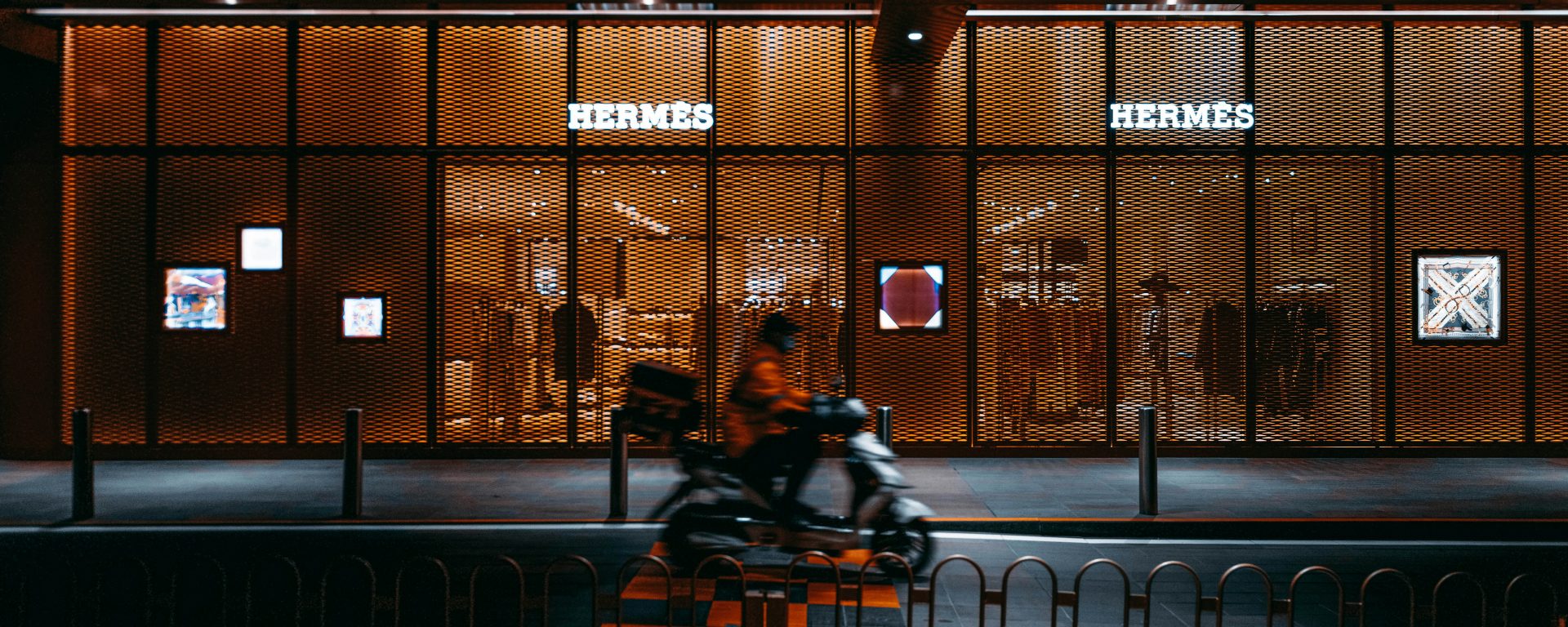As the fashion world winds down from a season of fashion weeks in New York, Milan, Paris, and Los Angeles, buzz around new designs and creators is at a high. People are reflecting on what ensembles graced the catwalk and studying which ones garnered a nod from Anna Wintour. If you sadly didn’t receive an invite to a show, never fear, because the looks are certainly gracing the internet.
We live in a world where more and more of our time is spent online, including how we interact with our clothing. Major fashion brands continue to host in-person shows, but several have recognized that the consumer experience for purchasing or interacting with their products is no longer limited to the physical. Rather, fashion now exists in the metaverse, indicating a shift towards increased brand digitalization.

Strike a Pose, Make Your Mark
So, what does this all mean for intellectual property? Well, as more interactive internet platforms and virtual reality worlds, such as Roblox and Decentraland continue to emerge and grow in popularity, people are increasingly building detailed online environments that include robust online personas. On these platforms individuals can immerse themselves in the world they or others have created and experience interpersonal interaction with other users.
In doing so, some people may want their avatars to be dressed in Gucci or Ralph Lauren, so they create or buy digital clothing that resembles iconic pieces from these and other major brands. As a result of digital imitation of these iconic pieces, the fashion companies’ intellectual property rights, specifically their trademark rights, are likely being violated.
Hermès International v. Rothschild – Battle of the Birkins
Earlier this year, a federal court found in favor of the luxury fashion house Hermès in a trademark battle against an individual, Mason Rothschild, who sold non-fungible tokens (NFTs) depicting a digital version of Hermès’ famous Birkin bag. The tote bag is well-known for its steep price-tag (prices start at $8,500 USD) and its high-quality hand-stitched leather.
Before diving into the details of the case, it is important to define two things: NFTs and trademarks.
An NFT is a digital asset which can be bought and sold online, frequently with the use of cryptocurrency. NFTs are typically one of a kind, meaning that they have limited supply and rise in value, depending upon their demand.
A trademark can be any word, symbol, logo, or device used on goods or services that are sold in commerce and identify a single source for such goods or services. For example, the phrase “Just do it” is a trademark because it is distinctive, and consumers can readily identify it with the Nike brand. When they see those words written across a t-shirt, they know that the source of the t-shirt is Nike.
In the context of this case, the defendant created NFTs of stylized versions of Hermes’s Birkin bag and the disputed trademarks involved both the “Birkin” name as well as the Birkin bag’s trade dress. Trade dress is a type of trademark that identifies a brand as the source of the goods through designs, colors, shapes, packaging, or “look and feel” as opposed to a word or words like a traditional trademark.
As a result of the defendant’s actions, Hermès sued the defendant alleging trademark infringement, trademark dilution, and cybersquatting of its protectible intellectual property rights. Trademark dilution is a special type of trademark cause of action afforded to marks that have been deemed “famous.” Cybersquatting, on the other hand, is the bad faith intent to profit from the registration of another’s mark as a domain name.
Protect Your Clothes and Your Trademarks
Trademark protection exists, in part, to protect consumers from being misled about the source of goods or services they are buying. A trademark lets consumers know that they can rely on the product they’re purchasing if consumers have a positive affiliation with the source. In alleging trademark infringement for the creation of the NFTs, Hermès essentially argued that the defendant’s NFTs likely created confusion as to their source, meaning that consumers would believe the NFTs originated with Hermès and not Rothschild.
To determine whether the defendant committed trademark infringement, the court considered several factors including the similarity between the Metabirkins and Hermès’s Birkin bags, a First Amendment determination known as the Rogers test, and whether Hermès is likely to sell its own NFTs using the Birkin mark.
Weighing these and other considerations, the court found in favor of Hermès on the trademark infringement claim as well as on the dilution and cybersquatting claims.
How the Battle of the Birkins Impacts Metaverse Fashion
While Hermès was certainly happy to have the court confirm the protection of its Birkin trademarks, this case is perhaps more important for what it means for the application of intellectual property law to online spaces. This case signals that trademark protection, at least for famous marks, is likely to translate from the physical world to the metaverse and users may be liable in “real life” for their actions taken in virtual reality spaces.
Other major fashion brands have filed for trademark registration with the United States Patent and Trademark Office (USPTO) for their marks to be used in virtual reality spaces. For example, luxury watchmaker Audmars Piguet currently has a trademark application on file with the USPTO for protection over its word mark, “Audmarks Piguet”, to be used on NFT-based goods containing images of its famous watches and timepieces. Similarly, Italian fashion house Prada, filed for trademark protection last year for the use of its “Prada” mark in stylized font on goods “in virtual worlds.” It should be noted, though, that registration is not necessary for a valid trademark to exist, rather registration puts others on notice of the existence of your mark and aids in potential litigation.

As people begin to spend more time living and interacting with others in virtual worlds, there is likely to be an increase in commerce moving towards these spaces as well. With increased commerce comes a higher risk of well-known companies’ IP being “knocked-off” by others. While the Hermès case seems to indicate that current trademark law applies to NFTs as it does to physical goods, registering famous trademarks on goods in digital spaces remains a good way to further protect brand awareness.

Meredith Wickenheiser
Assistant Blogger
Loyola University Chicago School of Law, J.D. 2025
